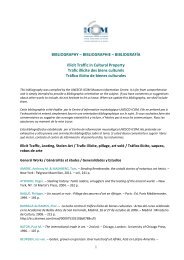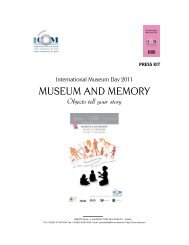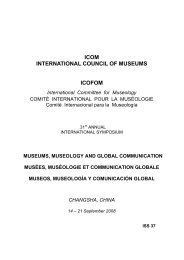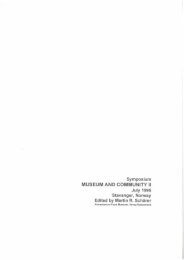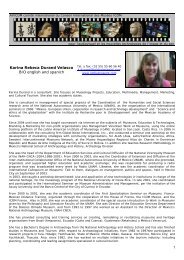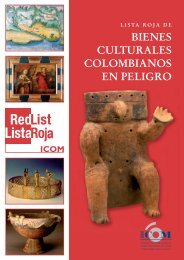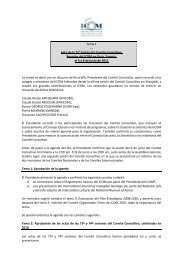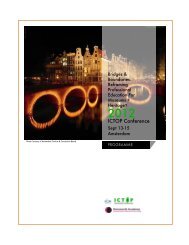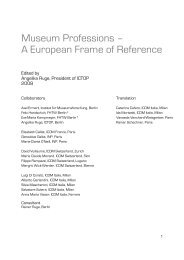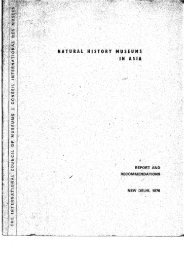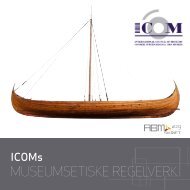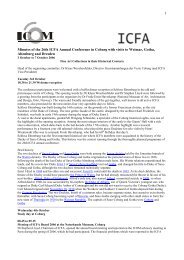Key Concepts of Museology - ICOM
Key Concepts of Museology - ICOM
Key Concepts of Museology - ICOM
You also want an ePaper? Increase the reach of your titles
YUMPU automatically turns print PDFs into web optimized ePapers that Google loves.
ARCHITECTURE<br />
n.–Equivalent in French: architecture; Spanish:<br />
arquitectura; German: Architektur; Italian:<br />
architettura; Portuguese: arquitectura<br />
(Brazil: arquitetura).<br />
(Museum) architecture is defi ned as<br />
the art <strong>of</strong> designing and installing<br />
or building a space that will be used<br />
to house specifi c museum functions,<br />
more particularly the functions <strong>of</strong><br />
exhibition and display, preventive<br />
and remedial active conservation,<br />
study, management, and receiving<br />
visitors.<br />
Since the invention <strong>of</strong> the modern<br />
museum, from the end <strong>of</strong> the 18 th century<br />
and the beginning <strong>of</strong> the 19 th ,<br />
while old heritage buildings were<br />
also being reconverted for museum<br />
use, a specifi c architecture evolved<br />
that was linked to the requirements <strong>of</strong><br />
preserving, researching and communicating<br />
collections through permanent<br />
or temporary exhibitions. This<br />
architecture is evident in the earliest<br />
museum buildings as much as in the<br />
most contemporary ones. The architectural<br />
vocabulary has itself infl uenced<br />
the development <strong>of</strong> the idea <strong>of</strong> the<br />
museum. Thus the form <strong>of</strong> the temple<br />
with a cupola and columned portico<br />
became established along with the<br />
gallery, conceived as one <strong>of</strong> the main<br />
A<br />
models for fi ne arts museums, and<br />
by extension gave rise to the names<br />
gallery, galerie, galleria, and Galerie<br />
in France, Italy and Germany and in<br />
Anglo-American countries.<br />
Although the form <strong>of</strong> museum<br />
buildings was <strong>of</strong>ten focused on safeguarding<br />
collections, it evolved as<br />
new functions in museum work were<br />
developed. So it was that after seeking<br />
solutions for better lighting <strong>of</strong><br />
the exhibits (Souffl ot, Brébion, 1778;<br />
J.-B. Le Brun, 1787), for distributing<br />
the collections better throughout the<br />
museum building (Mechel, 1778-<br />
1784), and for structuring the exhibition<br />
space better (Leo von Klenze,<br />
1816-1830), at the beginning <strong>of</strong> the<br />
20 th century museum people realised<br />
that the permanent exhibitions must<br />
be reduced. To this end they created<br />
storage areas, either by sacrifi cing<br />
exhibition rooms or by creating space<br />
in the basement, or by building new<br />
structures. In addition, every effort<br />
was made to make the setting for<br />
the exhibits as neutral as possible –<br />
even if this meant sacrifi cing all or<br />
part <strong>of</strong> the existing historical décor.<br />
The invention <strong>of</strong> electricity greatly<br />
facilitated these improvements and<br />
allowed the lighting systems to be<br />
completely revised.<br />
23



